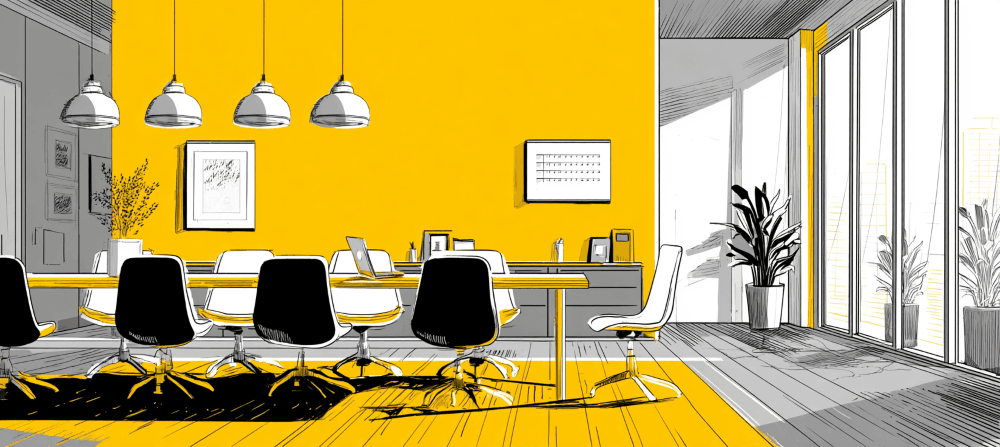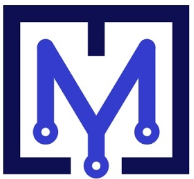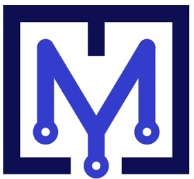Meeting Room Analytics – How to Measure and Improve Usage


“No available meeting rooms.” It’s a frustrating message we’ve all seen on the booking system – often while we also see plenty of empty rooms around us. Meeting spaces are one of the most common pain points in offices. Either you can’t find a room when you need one, or you discover later that booked rooms sat empty due to no-shows. This paradox – fully booked but half empty – is exactly what meeting room analytics aims to solve.
In this article, we’ll dive into how to accurately measure meeting room utilization and use data to improve it. Facility managers and IT teams can harness these insights to optimize room schedules, right-size the number and types of meeting spaces, and eliminate waste like ghost bookings. Say goodbye to wandering the halls in search of an open room!
Why traditional booking data isn’t enough
Most offices rely on calendar booking systems (like Outlook, Google Calendar, or specialized room scheduling tools) to manage meeting rooms. These are great for coordination, but their data often paints a misleading picture of usage:
- Ghost Meetings (No-Shows): Studies have found that a significant portion of booked meetings never actually happen. For instance, one report noted an average meeting room no-show rate of around 40%. That means nearly half the time a room is reserved, nobody shows up! Relying on booking data alone, you’d think a room was “in use” because it was booked, when in reality it sat empty.
- Underutilized Capacity: Booking systems don’t tell you how many people actually attended a meeting. You might have a room booked for a 10-person team meeting every week, but if only 4 people typically come, the room is oversized and inefficient. In fact, our research found nearly 45-50% of the time meeting rooms are used by just one person regardless of room size – people camp in large rooms for solo calls. That’s a lot of wasted seats.
- Hoarding and “Just in Case” Reservations: Some employees book recurring meetings or multiple tentative slots “just in case,” and then release them last minute or not at all. This blocks others from scheduling and makes demand seem higher than it truly is.
Given these issues, if you simply look at calendar data saying “rooms are 90% booked,” you might falsely conclude you need more meeting rooms – when actually you might need better management of existing ones and/or resizing.
This is where meeting room analytics with occupancy sensors comes in. By measuring actual utilization (real people presence in the room), you get the ground truth.
Measuring Meeting Room Utilization with Sensors
To capture true usage, companies are deploying occupancy sensors in meeting spaces. Here’s how they help:
- True Utilization Rate: You can calculate how often each room is truly occupied versus available. For example, sensor data might reveal a given conference room is only used 30% of office hours, even though it’s 70% booked on the calendar. Industry experts often cite a target meeting room utilization of 40–60% of work hours as healthy. If yours is far below that, you’ve got room to improve efficiency.
- No-Show Detection: By integrating sensor data with the booking system, you can automatically detect no-shows. For instance, MySeat’s solutions can flag when a room remains empty X minutes into a scheduled meeting. These “ghost meetings” can then trigger an auto-release, freeing the room for others. Meeting room analytics makes such features smarter by providing reliable occupancy input.
- Meeting Size Analytics: MySeat Sensors on seats determine how rooms are used. You might discover your big 12-person boardroom usually hosts 3-4 people meetings, indicating you could split it or create more small rooms. Conversely, if your 4-person huddle rooms are constantly cramming 6+ people (something you can detect by CO2 sensors or higher counts), that’s a sign you need a few larger rooms or more midsize options.
- Peak Times and Bottlenecks: Analytics dashboards often visualize usage over time. You might see that 10am–2pm on Tue-Thu is prime meeting time (very common in many offices), whereas early mornings or late afternoons have many free rooms. This can inform policy – maybe encourage “meeting-free Friday afternoons” or schedule all-hands during low demand periods to flatten peaks.
Modern sensors are 100% anonymous (no cameras) and just detect interactions between users and the office furniture. They feed data to a cloud dashboard where you can monitor utilization live and historically. On our Technology page, you can see examples of occupancy analytics dashboards that visualize room usage patterns.
Improving Meeting Room Usage
Once you have accurate data, what can you do to actually improve utilization and user satisfaction? Here are several strategies:
- Right-Size Room Mix: Use the analytics to align room sizes with actual meeting sizes. If your 8-person rooms are mostly used by 2–3 people, perhaps convert some to 4-person rooms or even phone booths. Conversely, if you see a lot of instances of people overcrowding small rooms or taking meetings in hallways, maybe reconfigure a couple of underused offices into an extra midsize meeting room. Utilization data provides justification for these changes, which helps in getting budget approval too.
- Improve Booking Policies: Sometimes simple policy tweaks help. For instance, discourage the practice of booking large rooms for small meetings if smaller rooms are available. You could enforce this via software (some booking systems will suggest an alternate room if you try to book a big one for 2 people). Another approach: institute a 15-minute buffer default for meetings (e.g., 45 min instead of 1 hour) to reduce back-to-back collisions and give time for overruns or sanitization.
- Enable Easy Ad-hoc Use: Make it easy for employees to see which rooms are free right now using our light web app which displays a live map, on your smartphone or desktop browser. The more accessible spontaneous room usage is, the less frustrating it is when a booking system fails them. We integrate occupancy sensor data to show a green/red status light for each room (green = free, red = occupied). This real-time visibility encourages people to make use of free spaces rather than assuming everything is taken.
- Flexible Spaces for Overflow: If your analytics show certain peaks where all rooms are booked and actually used (e.g., Wednesdays at 11am might genuinely be full), consider creating flexible overflow spaces. This could be an open collaboration area that can function as a meeting spot when needed. Perhaps it’s not a formal room but has a small table or soft seating with some privacy dividers. Equipping it with a mobile whiteboard or screen can let teams use it as an impromptu meeting zone when no formal room is open.
- Training & Culture: Sometimes the issue is cultural – people book a room for every little discussion out of habit. Encourage a culture of considerate booking. For example, suggest that one-on-one conversations don’t always need a formal room, if you have alternatives like cafe areas or could walk-and-talk. Conversely, encourage important collaborative sessions to be in-person in good spaces, and ensure employees know how to release a booking they no longer need, you could implement one-click cancellation links in calendar invites, etc. A bit of user education can reduce “just in case” bookings.
- Use Insights for Design Changes: Over time, meeting room analytics might reveal patterns for redesign. Maybe one room is constantly bypassed because it’s in a remote corner or has a weird layout. Or a particular style of room (say, those without windows) have lower utilization. You can then intervene, perhaps updating the unpopular room’s decor or tech to make it more attractive, or repurposing it. At the macro level, you might realize you need more collaboration space of a certain type, like more small 2-person enclaves for quick huddles, if phone booths are always full for ad-hoc chats. Let data drive continuous improvement.
Example: Data-Driven Meeting Room Changes
One of our clients, a mid-size tech firm, used MySeat’s meeting room analytics and found that their two largest conference rooms (each seating 12) were never filled beyond 6 people, and one was often empty despite lots of bookings. Meanwhile, their four-person huddle rooms were over capacity daily, with people squeezing in extra chairs. Armed with this evidence, they decided to split one of the large rooms into two smaller meeting rooms and added more video call pods. They also implemented an auto-bump for no-shows – within the first month, this freed up 30% more meeting room availability by recapturing empty booked time.
Employees reported it became much easier to find a room when needed, and the frustration of ghost meetings dropped sharply. This small example illustrates how data can directly inform smarter space utilization and a better employee experience.
Conclusion
If conference rooms have been a headache in your hybrid office, meeting room analytics is the aspirin. By going beyond what the calendar says and measuring actual occupancy, you gain clear insight into how these valuable spaces are used – or not used. With that knowledge, you can tackle no-shows, adjust room offerings, and shape policies that maximize availability.
No more guesswork or relying on complaints (“We never have enough rooms!”). The data might reveal you actually do have enough, just not managed optimally. Or it will pinpoint exactly what kind of room you’re lacking. Either way, you can take targeted action.
In our hybrid work world, where in-person time is precious, every meeting counts. Ensuring that employees can easily find the right space for those important face-to-face moments is key. Meeting room analytics gives you the tools to do exactly that, to cut the clutter of ghost bookings and unlock the full potential of your collaboration spaces.
So, if you’ve been flying blind with just the scheduling system’s view, consider equipping your meeting rooms, even just a few to start, with occupancy sensors.
The insights you gain will lead directly to improvements that everyone at your organization will notice, from the receptionist trying to accommodate a visitor meeting, to the project team searching for a brainstorm spot.
Make your meeting rooms work as hard as your employees do. With good data and smart tweaks, you can turn that “no available rooms” message into a problem of the past.
Learn more about our occupancy sensor solutions for meeting spaces on our Technology page, or read our full analysis comparing booked vs actual room usage here.

